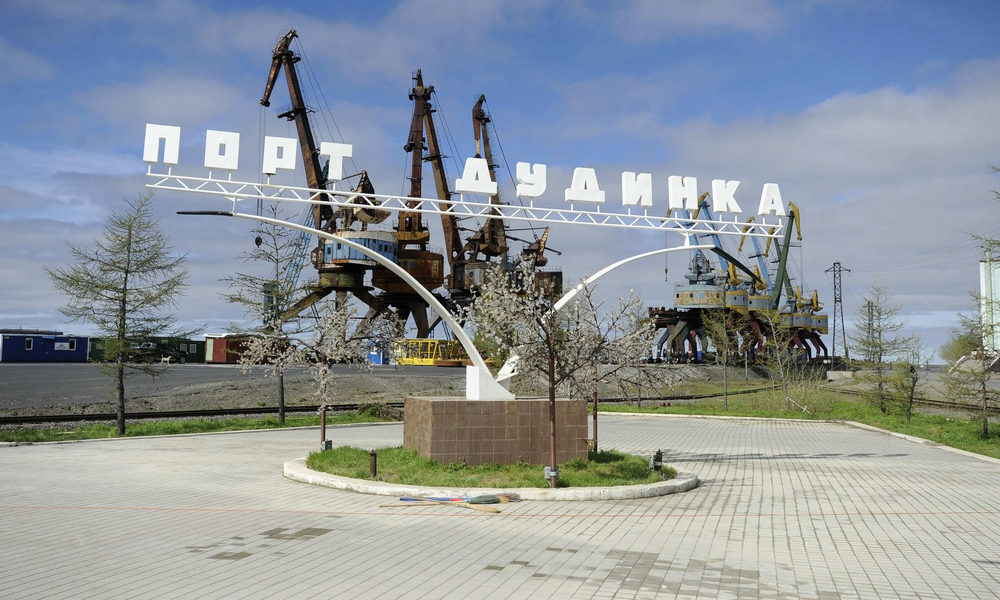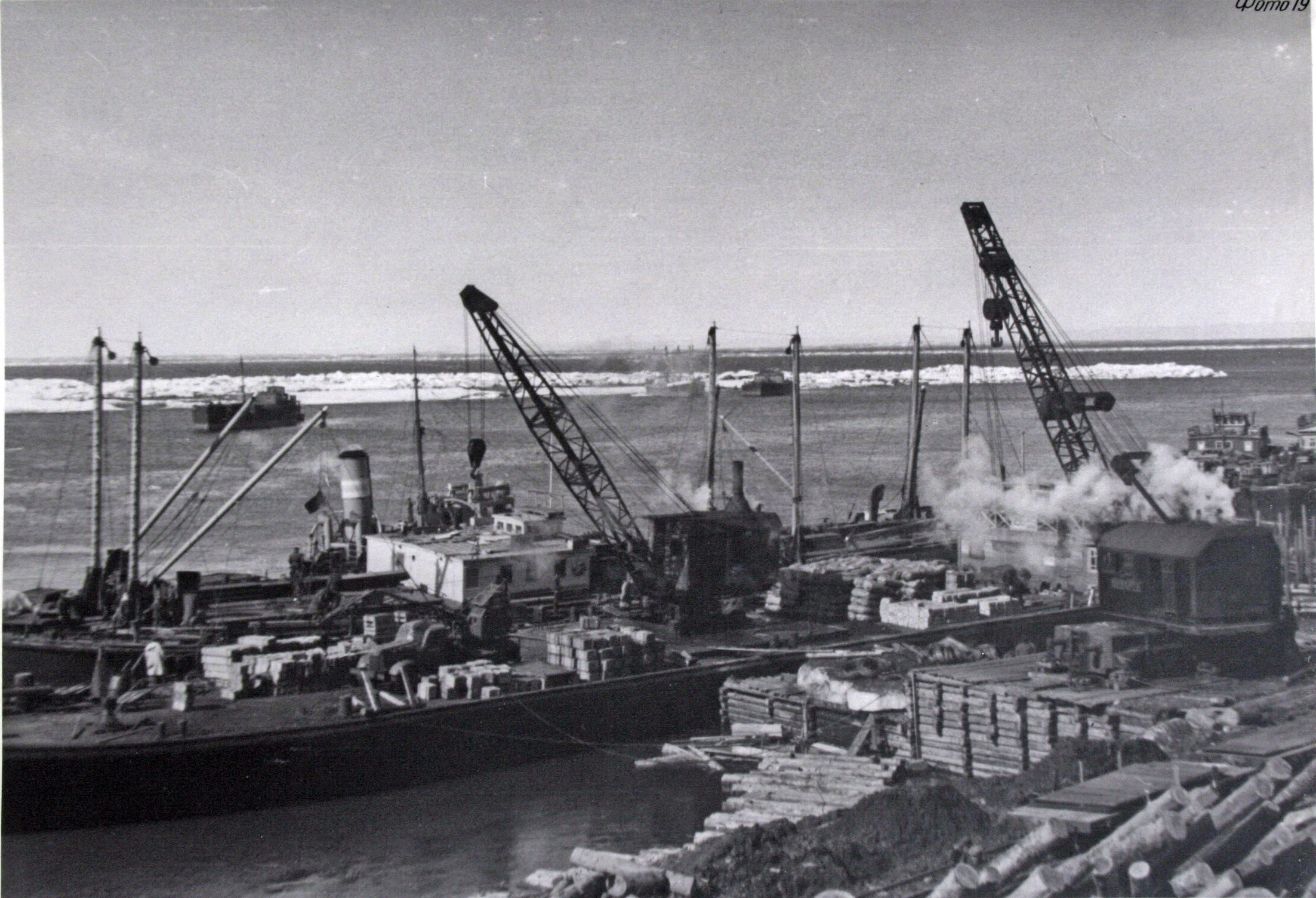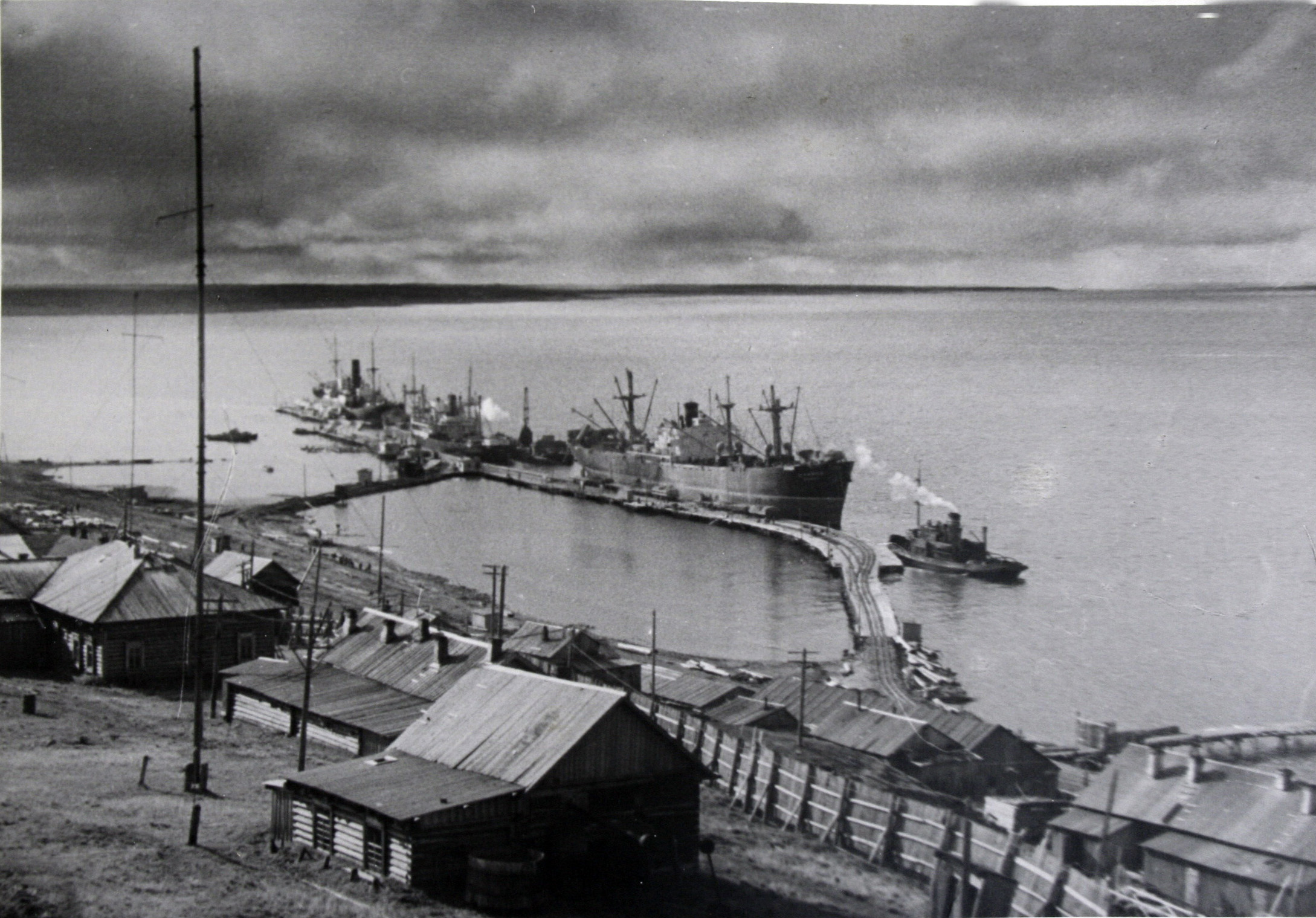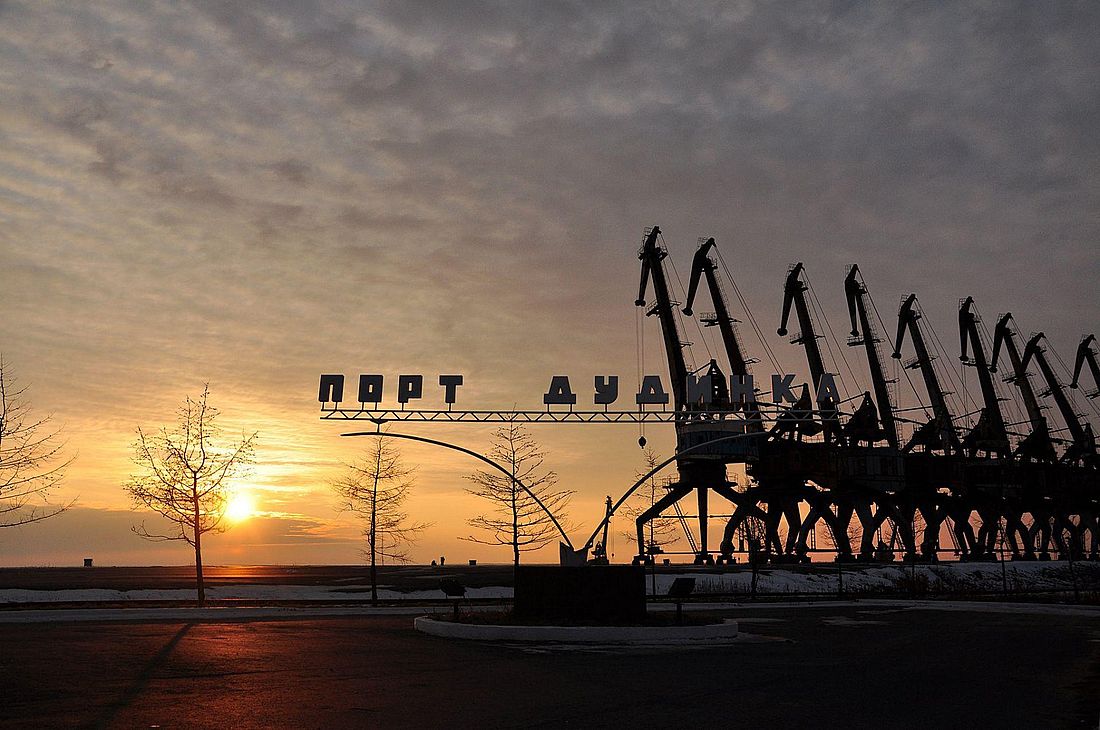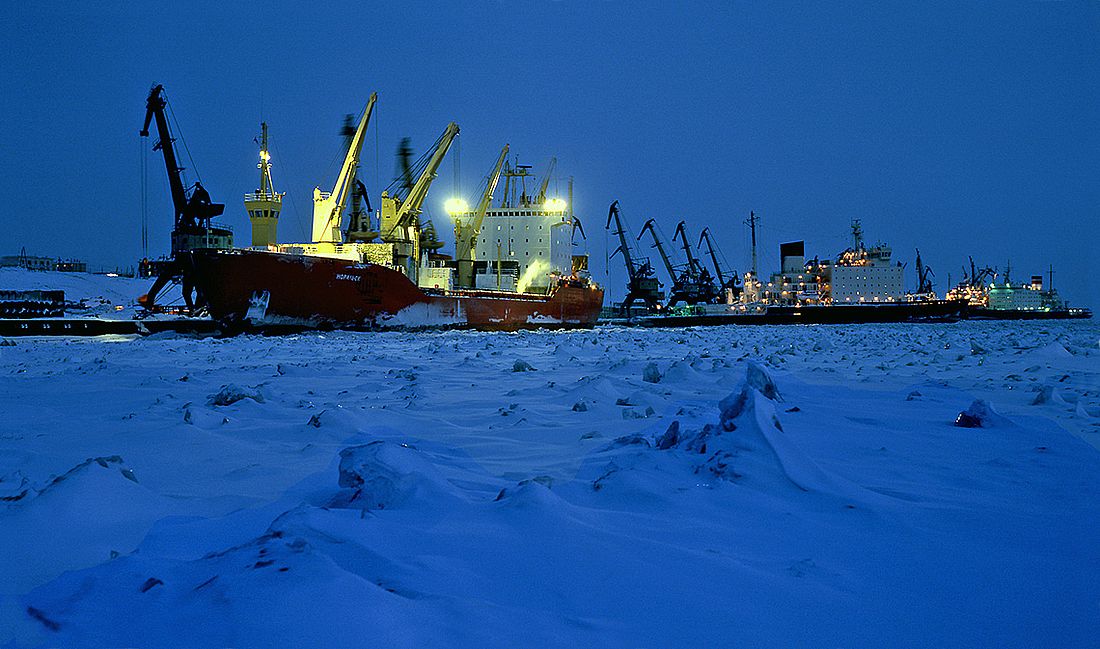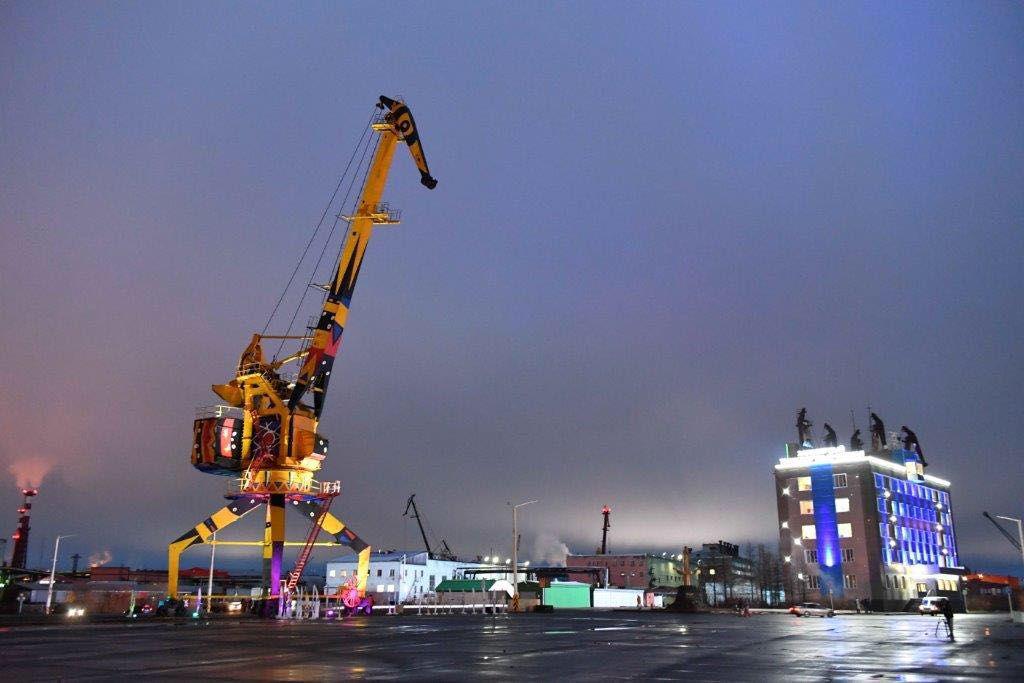In other words, if there was no port – there would have been no polar cities and such infrastructure. Nothing would have happened. It would not have been possible to get here, to the land of silence and eternal ice.
In one of our previous walks, we visited the Norilsk railway, which began being built in 1936 and became one of the main highways for construction in the Arctic. The waterways in the Far North were originally Ust-Port (the very first port on Taimyr began being built in 1921 by Lenin’s order for the development of the territory). In 1934, a port in Dikson was created – by the order of the Glavsevmorput to supply ships operating in the Arctic with coal, water and food.
The Dudinka port appearing is directly related to the decision of the Soviet government to build a mining and metallurgical plant. On June 23, 1935, the first builders of Norilsk Nickel arrived here on the Spartak steamer. The first 40-meter berth of the Dudinka seaport appeared a little later, in 1936. In the same year, 35 thousand tons of various cargoes and 60 thousand cubic meters of lumber were delivered to Dudinka for navigation. In 1939-1940 the port handled up to 300 thousand tons of cargo per season, four berths operated here.
The official opening date of the port is December 8, 1944. A year later, the port management was transferred to Norilsknab organization.

In 1952, the construction of the railway was completed, linking the port with Norilsk. But modern berths appeared here only in 1964. A year later, they were adorned with portal cranes. And in 1967 the first 100-ton floating crane appeared at the port’s disposal, it was capable of handling super-heavy loads. In 1970, the first experimental voyage was made here on the diesel-electric ship Gizhiga, accompanied by the Kapitan Voronin and Kapitan Belousov icebreakers.
The Yenisey route, both cargo and passenger, operates from June to the end of October. During the rest of the time, ships’ sailing on the river is hampered by a multi-meter layer of ice. Despite this feature, year-round navigation along the Northern Sea Route has been operating since 1978: it was then that the Arctic line Murmansk – Dudinka started operating thanks to icebreakers with shallow draft, capable of entering the Yenisey.
Since 2000, the port has been replenished with new equipment, modern portal cranes, and forklift trucks. In 2012, a permanent cargo-and-passenger checkpoint across the state border of the Russian Federation was opened in the port – this is how our port became the northernmost international seaport.
Today, in order to solve the problems of cargo delivery and transporting the Norilsk combine’s products, six vessels of reinforced ice class operate along the Northern Sea Route, all of them belong to Nornickel. The Arctic fleet provides year-round and regular service between Arhangelsk, Murmansk and Dudinka. It operates direct runs to the ports of Europe and Asia. The northernmost in Russia and the largest in Siberia, the port of Dudinka connects the mainland of Russia and foreign countries.
The port is located on the right bank of the Yenisey and is used as river and sea one at the same time. The Northern Sea Route passes through it. Walking along the banks of the Yenisey and admiring the port cranes is a fascinating experience. From here, a beautiful view of the water area and Dudinka which turned 342 this year opens up.
The Dudinka port is unique in terms of hydrological parameters: it is the only one in the world whose sea and river berths are flooded with water every spring. The entire infrastructure of the port is dismantled in advance and moved to higher elevations. After the ice drift, it is restored again.
For other routes in our guide check the Must see and must do section.
Text: Marina Horoshevskaya, Photo: Nikolay Shchipko and open sources
